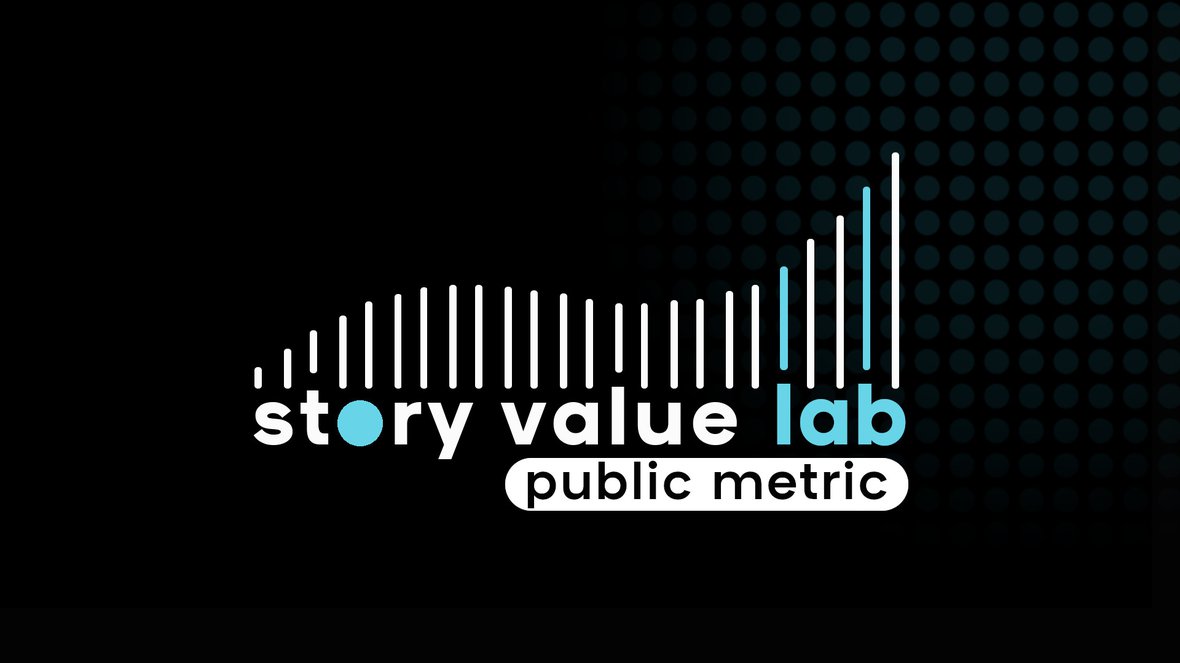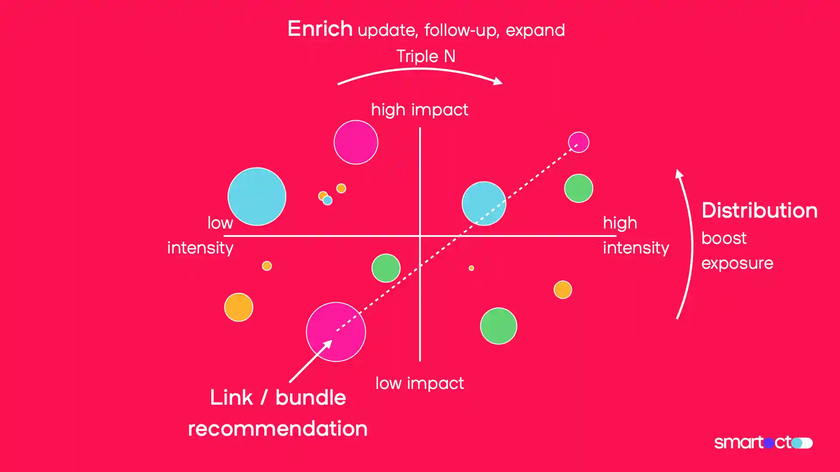The X-axis shows intensity (a combination of attractiveness and relevance) and the Y-axis shows reach (how much impact the story generated). Any story can be put somewhere in this diagram, but its place depends on the mission of the publishers and the demands of the audience. Once you know where the story sits in the diagram, it gives you a clear picture of what you can do in terms of optimisation. Smartocto's notifications are based on the following:
- Stories with low intensity can be boosted with tips to create follow-ups from different user needs perspectives.
- Stories with low impact can be supported by tips regarding distribution, exposure or by smart recommendations.
Smartocto is currently developing this system in collaboration with a number of public media. At the same time, our data science department is investigating collaborations with research institutes in the field.
In addition to this (because we're busy bees), we are also working on a Notification Manager, where editorial teams can create their own notifications and make their own choices regarding which section, topics, authors, signature stories, and metrics should warrant alerts (and when) - but also who should be notified in each case.
Making public metrics actionable
Once we have public value in our system (the Mission index combined with reach, loyalty and engagement metrics), it's possible to create notifications like the following:
- This story rates highly for loyalty and is 100% related to your mission. It would be great for your homepage.
- These three stories score high on public value, they are good candidates for your newsletter.
- FYI: the mission signature story that had the most consumption, is now in the recommendation engine.
- Your weekly report is out, with the online VOD that delivered the most public value. Check it out
- The topic [TOPIC] reached the highest public metric this week. Place related content in your homepage carousel to optimise your overall impact.
Smartocto is never a one size fits all solution, and the system can be customised to match your approach to public metric thinking and adjusted to the mission and goals of any organisation.
Combined with the algorithm development we did for the Triple N project, smartocto could also assist editorial teams creatively by giving suggestions to make news articles more explanatory or personal, to get the most out of those important mission-supporting stories.
Develop with us in the Innovation Lab
Everything we build is created with the client in mind, and we always appreciate new points of view or ideas. If you are a strategist at a public publisher that's interested in our public metric project, it'd be great to have you on board in our Innovation Lab. For more information, please contact us or visit the Innovation Lab page on our website.

